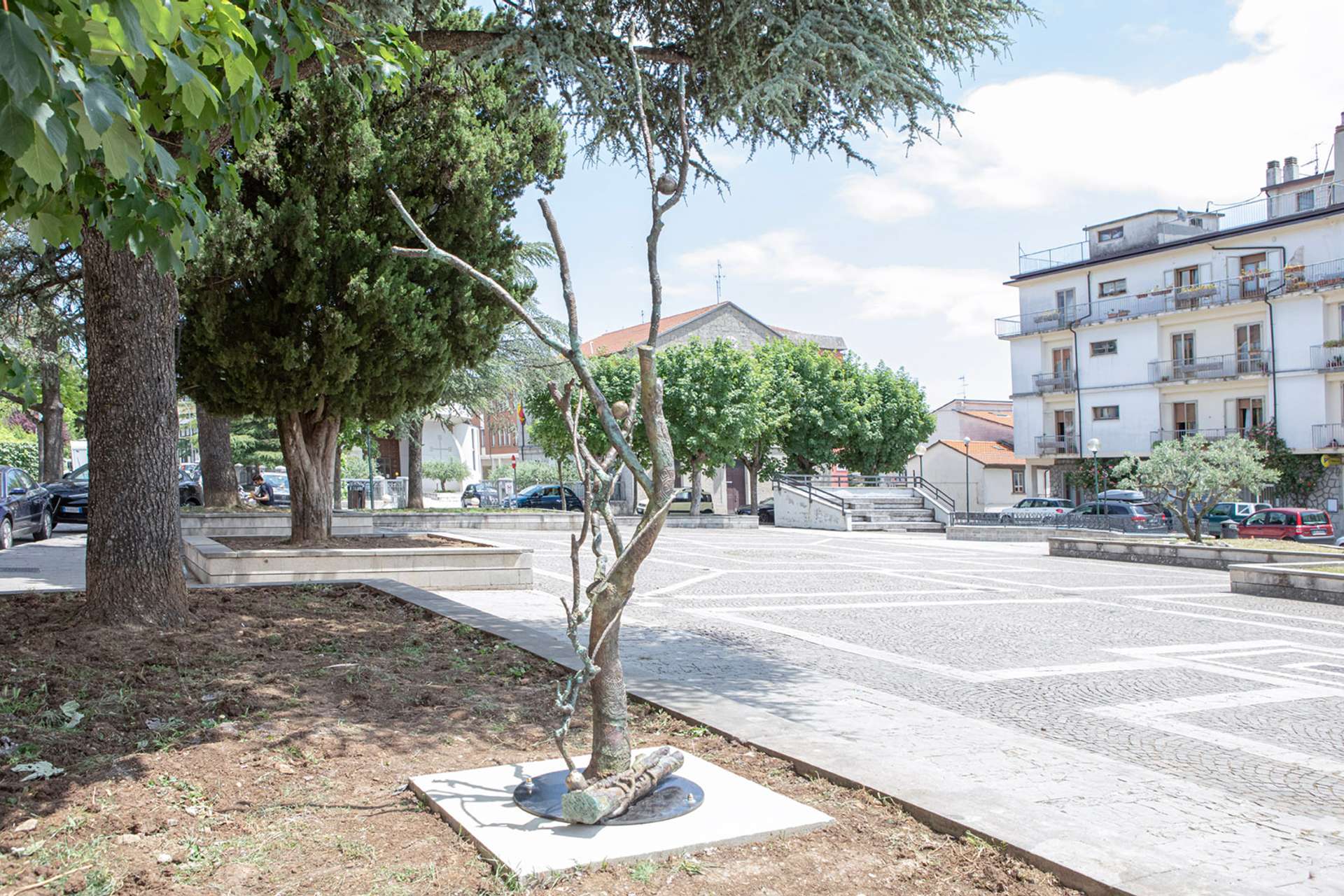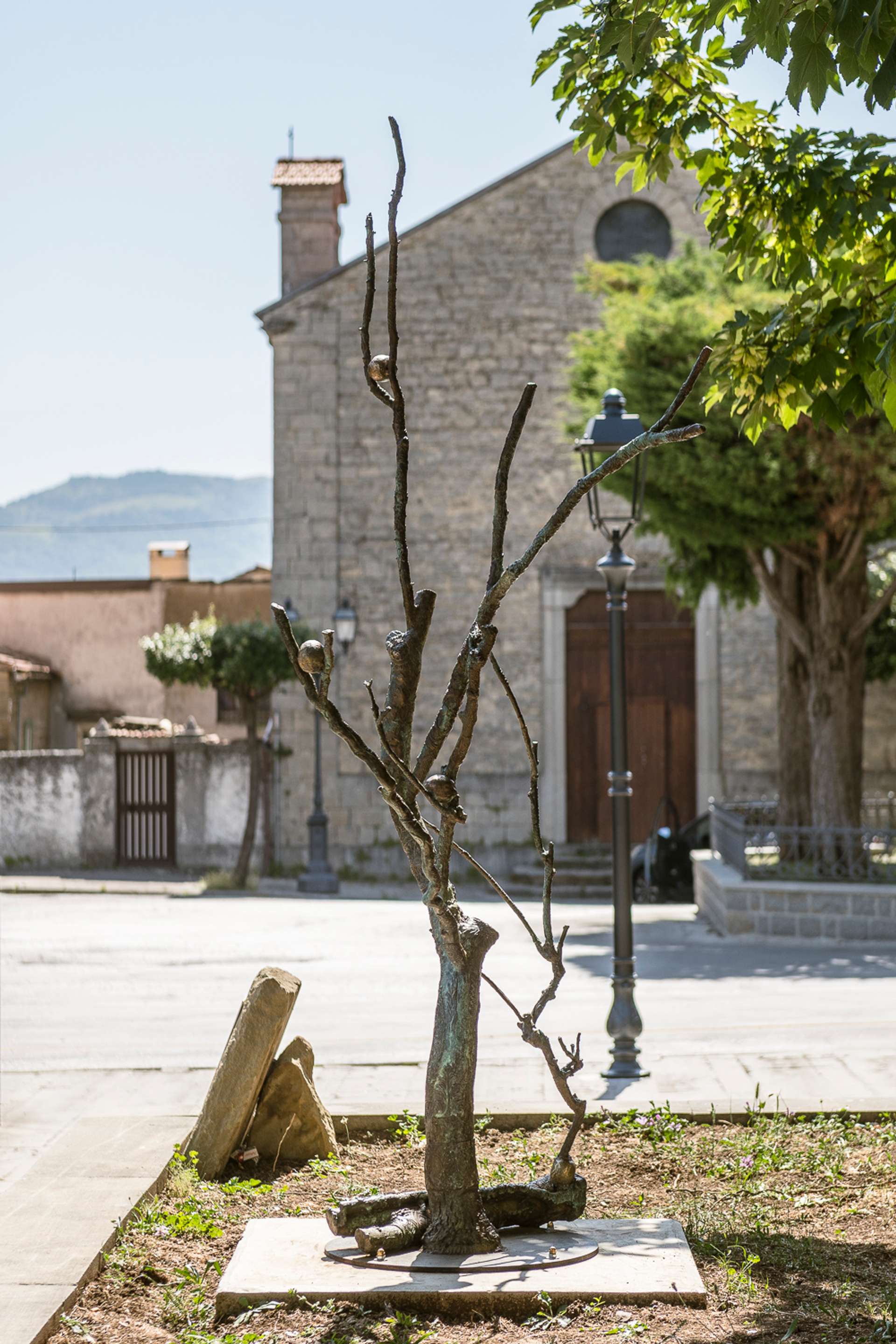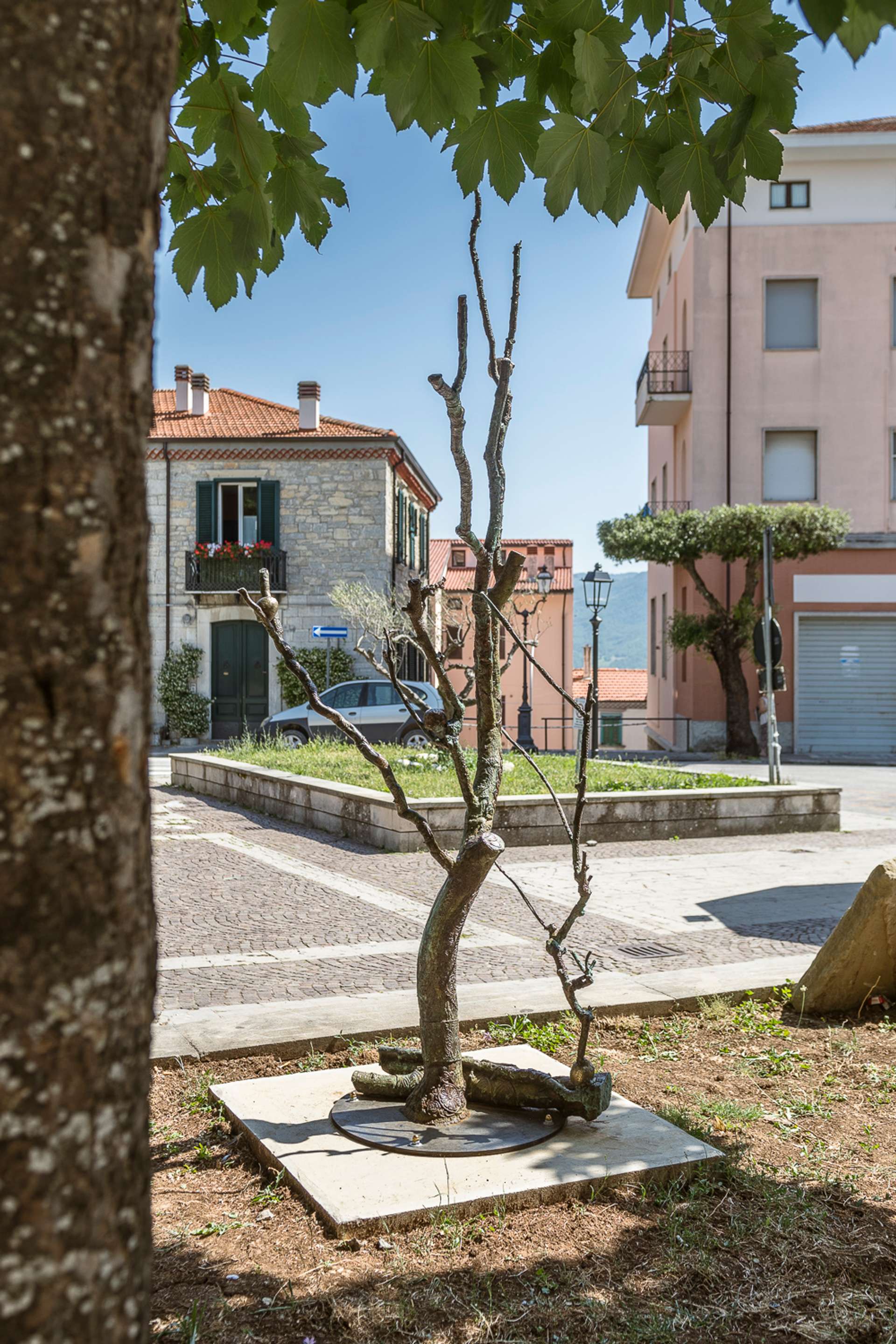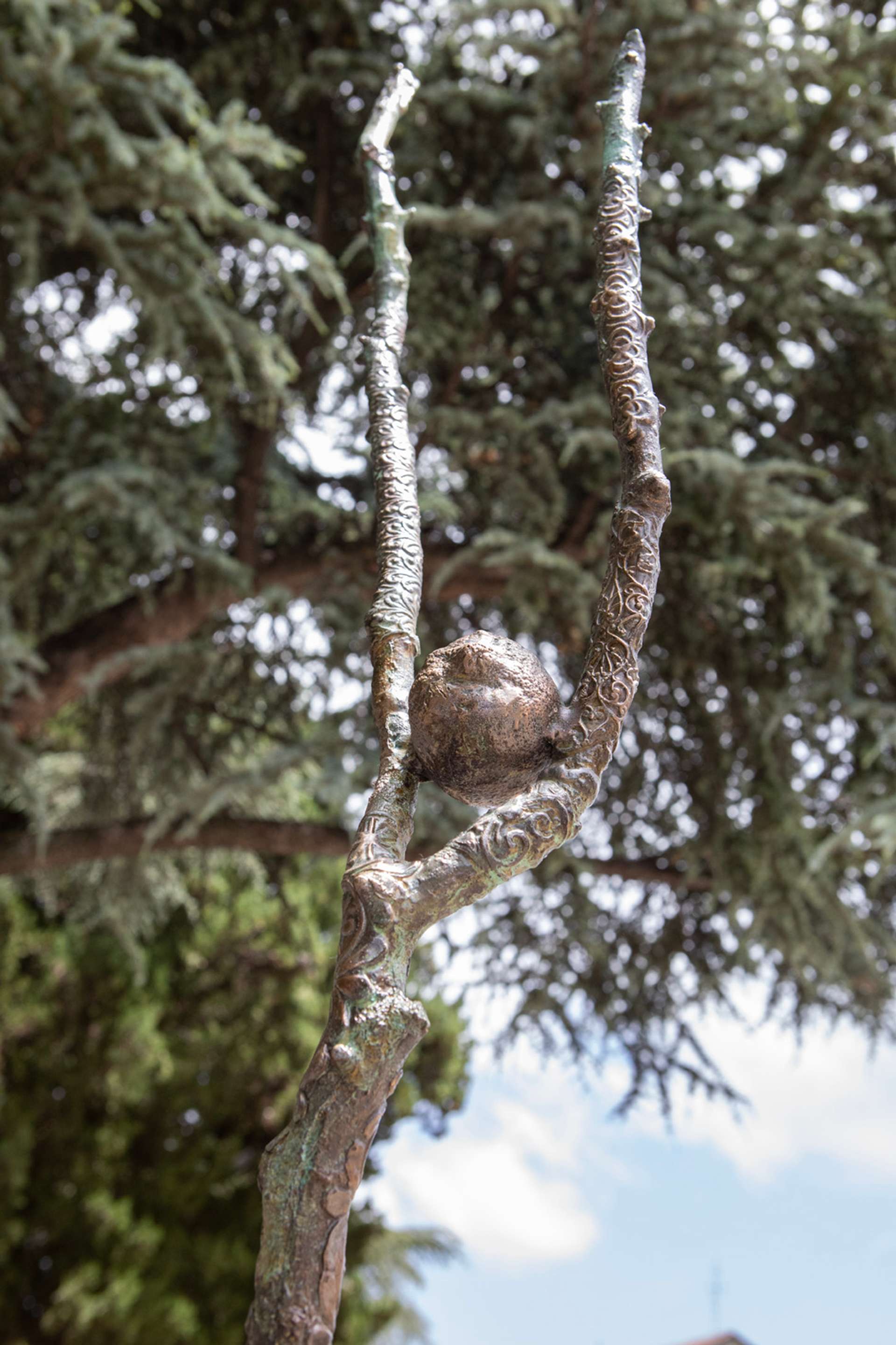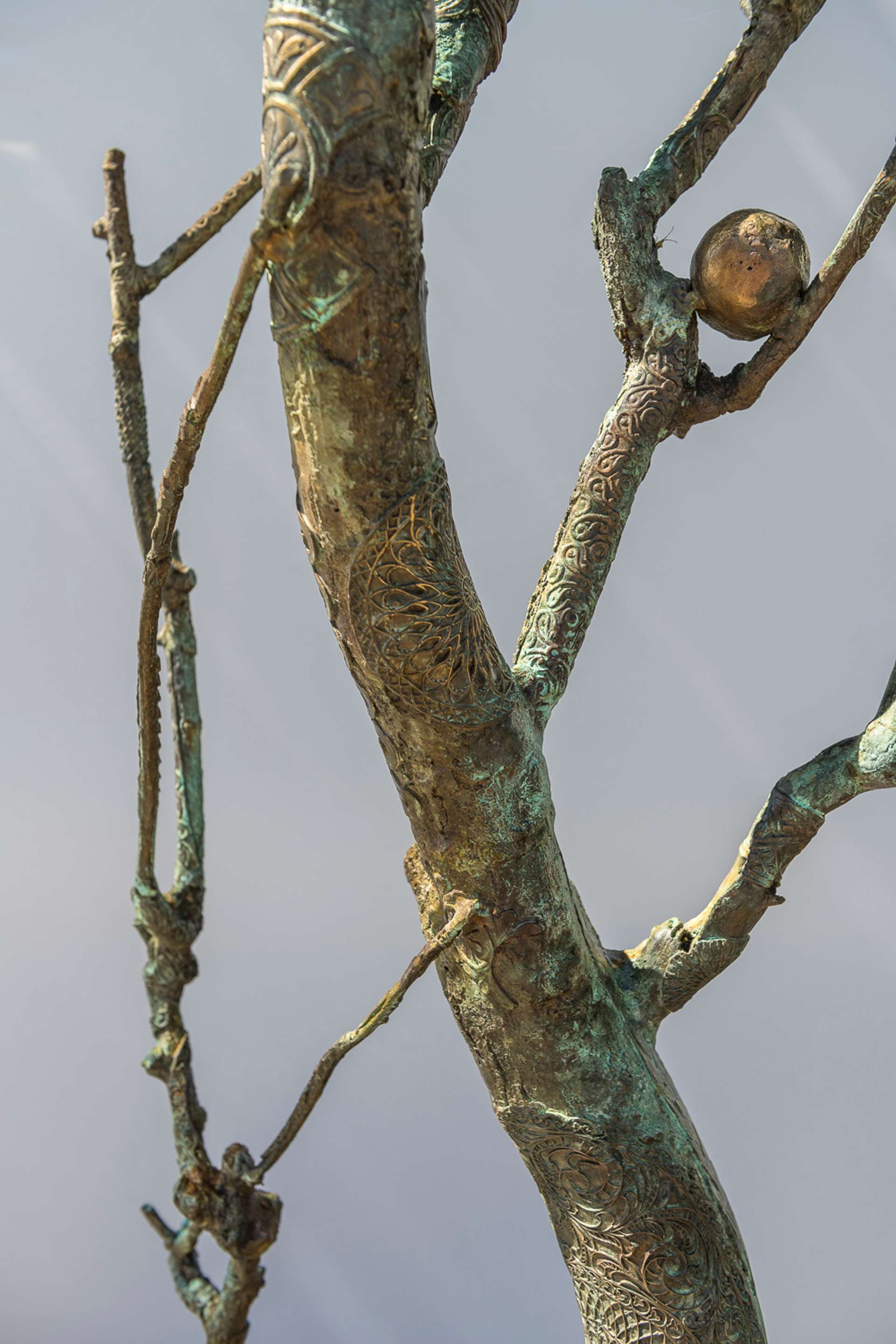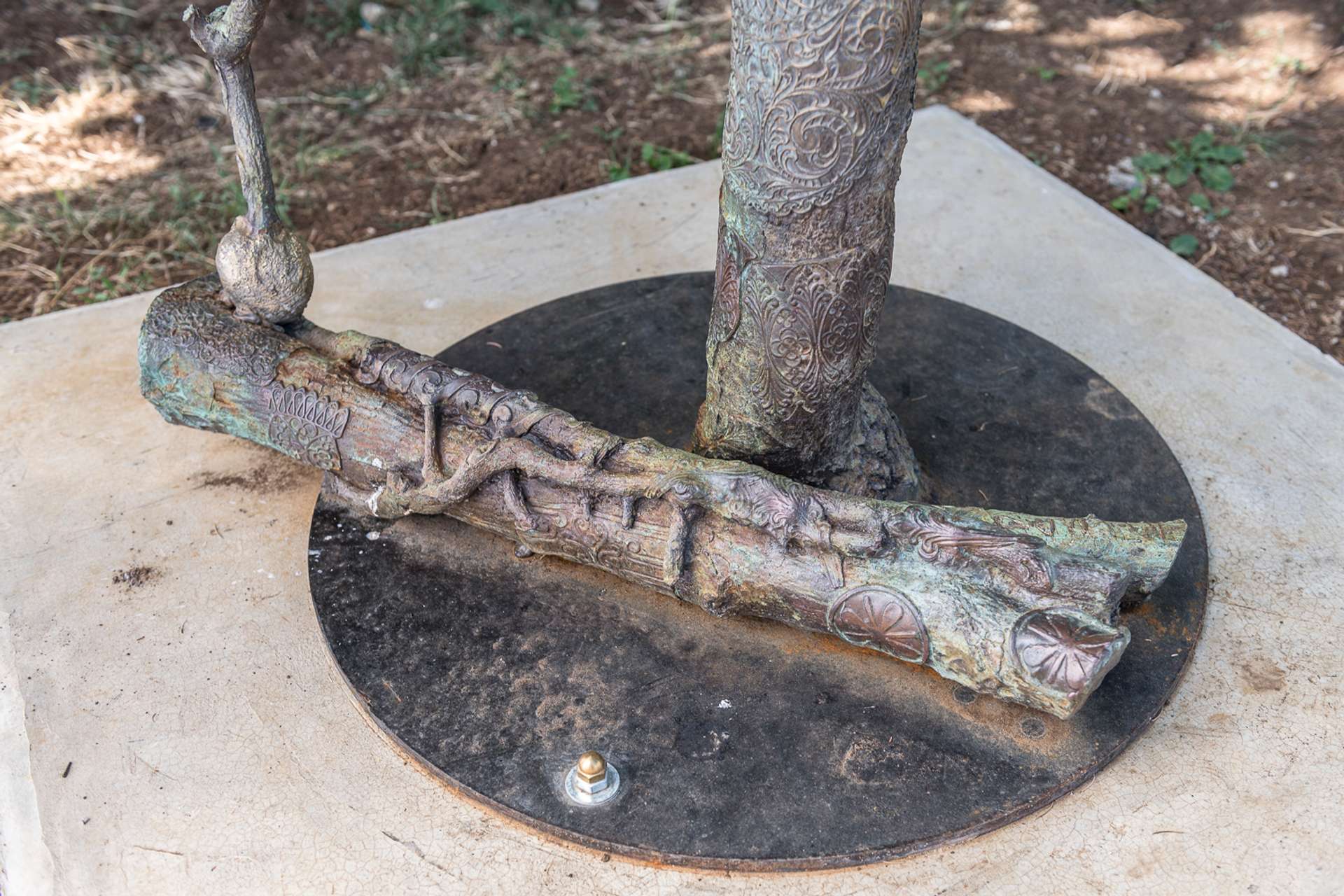Il buffone (the jester) has stopped in Agnone; after long and exhausting travels, he has decided to return to his roots to rest, in the town square. Il buffone is a storyteller, a travelling troubadour who moves from place to place telling his adventures and misfortunes, blending reality, fiction, past, present and future. It is natural to wonder how such a lively and mobile character could have become a statue, a bronze tree covered with decorations, motionless in melancholic expectation and repose.
The credit and blame lie with Diego Miguel Mirabella, a visual writer who interweaves poetry and sculpture and performs research into the languages of decoration in different cultures and places around the world.
Mirabella has worked in Agnone, here where the mountains provide a backdrop and the forests stretch as far as the eye can see. He has come face to face with millenary craft traditions that have withstood time to become the culture and soul of these locations.
He met the artisans of the foundry, Pontificia Fonderia Marinelli, custodians of tradition: since 1040, the foundry has been making the bells of the Popes, symbols of power and community, but also highly sophisticated musical instruments, which announce their presence with their sound and the decorations that cover them.
Il buffone is not flesh and blood, he is made of the same material as the millenary bells: Mirabella has created a bronze tree made of rose, oak and beech branches, entirely covered with the Marinelli foundry’s decorations; each element tells stories, and recalls Italic, Arab, medieval and Norman cultures, crossing time and space, right up to the present day. Il buffone was not, like Daphne, punished for his audacity and turned into a tree, Il buffone is a melancholic traveller, at rest, before resuming his journey.
ㅤ
Permanent work:
Diego Miguel Mirabella, Il buffone, 2023, bronze, 90 x 90 x 250 cm circa.
Palazzo San Francesco, Via Beato Lucci (inner courtyard), Agnone
Openig hours: Mon - Fri from 9.00 am to 13:30 pm
IN THINKING ABOUT THE PROJECT I HAVE CONTRASTING THOUGHTS, SOMETIMES I SEE IT AS AN ABUNDANCE OF DECORATION: A SYMPTOM OF A SEDUCTIVE DECLINE; AT OTHER TIMES LIKE THE SKIN OF A NOMADIC WISE MAN AND THE SIGNS OF A MEANINGFUL LIFE. THIS DOUBT, ALONG WITH OTHERS, GIVES ME THE URGE - AND WHY NOT? - TO EMBRACE IT
Diego Miguel Mirabella (Enna, 1988) lives and works in Rome where he attended the Academy of Fine Arts. In many projects, he makes use of the imagery, customs and culture of other artists or artisans, in order to explore the frontiers of communication and exchange between himself and “others”, creating works that arise from this clash.
He has taken part in many group and solo shows in Italy and abroad. His most recent exhibitions include: Frammenti da Lontano, Galleria Mazzoli, Modena (IT, 2023); Scoprivamo il sole, Museum of Turkish and Islamic art, Istanbul (TR, 2022); Italics, Monopoli (IT, 2022); Coppe di stelle nel cerchio del sole, Palazzo Abatellis, Palermo (IT, 2022); Materia Nova, Galleria d’Arte Moderna, Rome (IT, 2021); One clover and a bee and revery, Moonens Foundation, Brussels (BE, 2021); Decorato decoroso distratto, Studio Sales di Norberto Ruggeri, Rome (IT, 2021); Il castone e la barota, Studio Sales di Norberto Ruggeri, Rome (2019); Défragmentation, 1,61 Space, Brussels (BE, 2019); Art Truc Troc, Bozar, Brussels (BE, 2018). In 2016 he co-founded the artist-run space Limone in London and in 2021 he was amongst the winners of Cantica21, promoted by the Directorate General for Contemporary Creativity of the Italian Ministry of Culture.
THE ARTIST PRESENTS A BRONZE SCULPTURE ENTITLED "IL BUFFONE": A MELANCHOLIC STORYTELLER, A TREE COVERED WITH THE DECORATIONS OF THE PONTIFICIA FONDERIA MARINELLI, WHICH HAS BEEN MAKING PAPAL BELLS SINCE 1040
Agnone has a history stretching back thousands of years and a heritage of craftsmanship, such as the working of metals, including gold, bronze, iron and copper. This art developed in the 11th century as a result of the arrival of artisans from the Veneto region who founded the Venetian quarter in Agnone, with workshops and lion sculptures on the façades of buildings. Of the many historic foundries, today only the Pontificia Fonderia Marinelli remains, with a thousand years of history: it is the oldest foundry in Italy and one of the oldest in the world, traditionally specialising in bell-making. Copper craftsmanship is still flourishing, and traces of industrial archaeology can be seen, such as the Antiche Fonderie (Old Foundries) that utilised the sustainable energy provided by the river nearby. Another familiar traditional profession was woodworking, particularly carving, and every church has precious gilded wooden statues and altars. Agnone was known as a Città Regia (Royal City) due to its importance and, in addition to its 22 churches, it has much splendid architecture, with aristocratic mansions and ancient monasteries.
The town is located along a sinuous ridge, among farmed hills and high unspoilt mountains with high pastures that are used to make exceptional dairy products, in addition to ancient confectionery traditions.
‘Ndocciata’, a festival of pagan origin, is the historic and evocative fire festival held twice a year, in December, and it has become a nationally-famous event. Thousands of fir torches arranged in different ways and carried by men are paraded through the village to celebrate the winter solstice.
